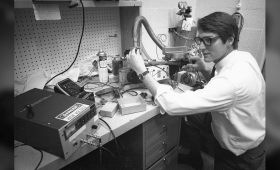LLNL researchers and collaborators unlock new secrets about the interiors of super-Earth exoplanets, potentially revolutionizing our understanding of these distant worlds.
Science and Technology
in the News
Science and Technology
in the News
News Center
LLNL scientist and collaborators find the unique temperature trend patterns associated with natural climate variability for 1980–2022.
LLNL and BridgeBio announce the commencement of clinical trials for a first-in-class medication that targets specific genetic mutations implicated in many types of cancer.
Lawrence Berkeley and Lawrence Livermore national laboratories determine the 71Ge half-life with a set of carefully performed measurements.

LLNL scientists and collaborators investigate several Microcystis cultures collected from algal blooms in Lake Erie.
LLNL researchers create software that can efficiently and effectively automate and analyze point defects in crystalline materials.
A LLNL scientist and international collaborators have characterized the atmosphere of the exoplanet, WASP-107b, using a transmission spectroscopy technique.
LLNL international scientists and collaborators collaborate on an experiment to optimize a high-intensity, high-repetition-rate laser using machine learning.
Amanda Randles was recognized for groundbreaking contributions to computational health with the 2023 ACM Prize in Computing.

